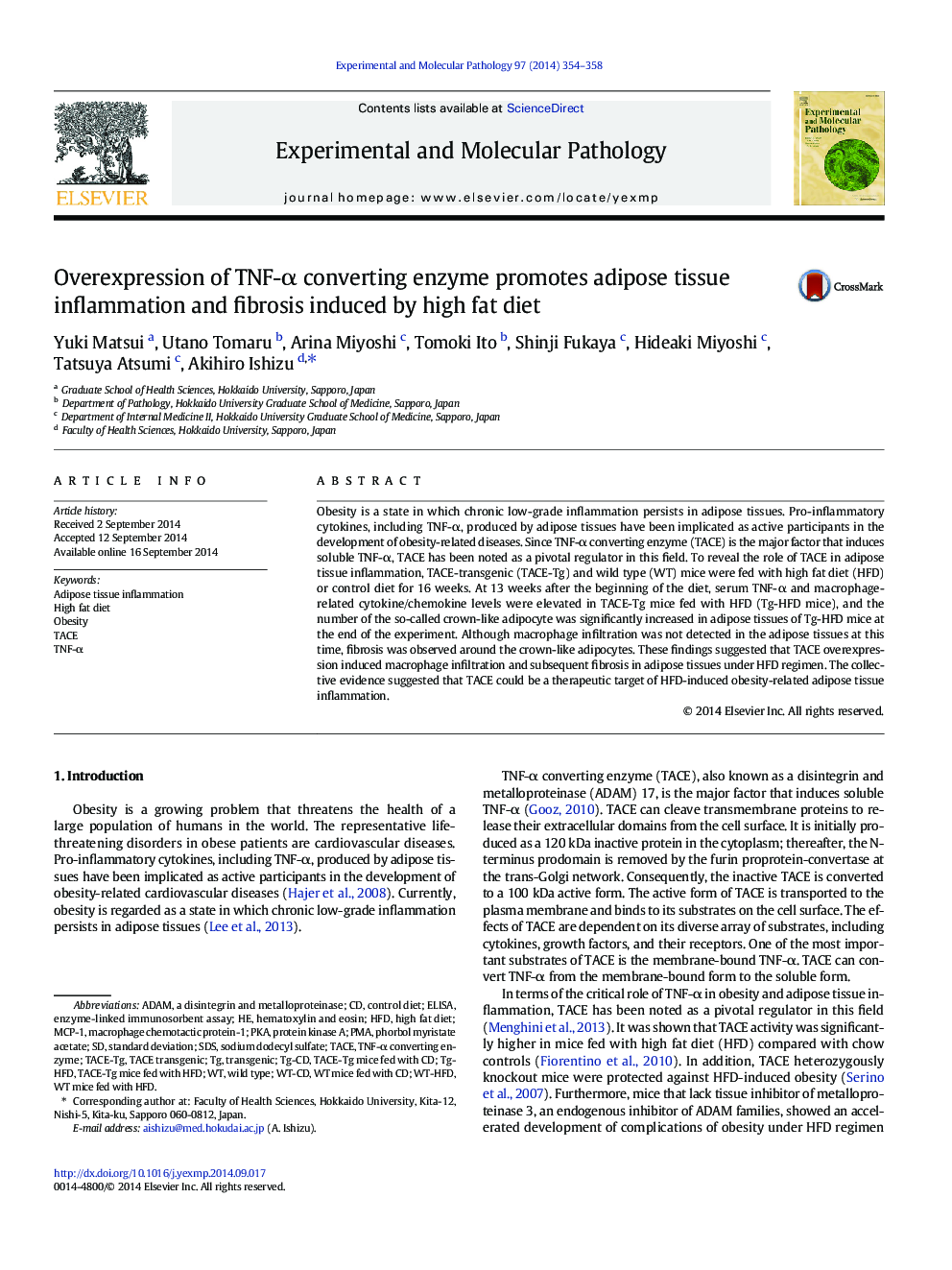| Article ID | Journal | Published Year | Pages | File Type |
|---|---|---|---|---|
| 5888079 | Experimental and Molecular Pathology | 2014 | 5 Pages |
â¢TACE-Tg and WT mice were fed with HFD or CD.â¢Serum TNF-α and MÏ-related cytokine/chemokine levels were elevated in Tg-HFD mice.â¢Crown-like adipocytes were increased in adipose tissues of Tg-HFD mice.â¢Fibrosis was observed around the crown-like adipocytes.â¢TACE induced MÏ infiltration and fibrosis in adipose tissues under HFD regimen.
Obesity is a state in which chronic low-grade inflammation persists in adipose tissues. Pro-inflammatory cytokines, including TNF-α, produced by adipose tissues have been implicated as active participants in the development of obesity-related diseases. Since TNF-α converting enzyme (TACE) is the major factor that induces soluble TNF-α, TACE has been noted as a pivotal regulator in this field. To reveal the role of TACE in adipose tissue inflammation, TACE-transgenic (TACE-Tg) and wild type (WT) mice were fed with high fat diet (HFD) or control diet for 16 weeks. At 13 weeks after the beginning of the diet, serum TNF-α and macrophage-related cytokine/chemokine levels were elevated in TACE-Tg mice fed with HFD (Tg-HFD mice), and the number of the so-called crown-like adipocyte was significantly increased in adipose tissues of Tg-HFD mice at the end of the experiment. Although macrophage infiltration was not detected in the adipose tissues at this time, fibrosis was observed around the crown-like adipocytes. These findings suggested that TACE overexpression induced macrophage infiltration and subsequent fibrosis in adipose tissues under HFD regimen. The collective evidence suggested that TACE could be a therapeutic target of HFD-induced obesity-related adipose tissue inflammation.
